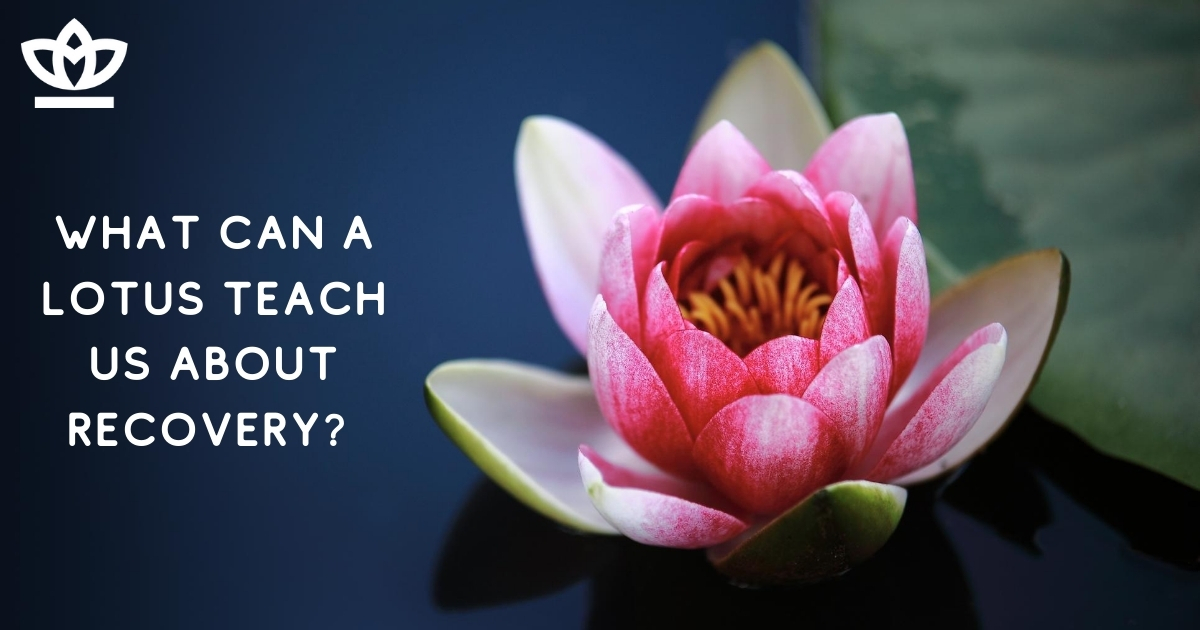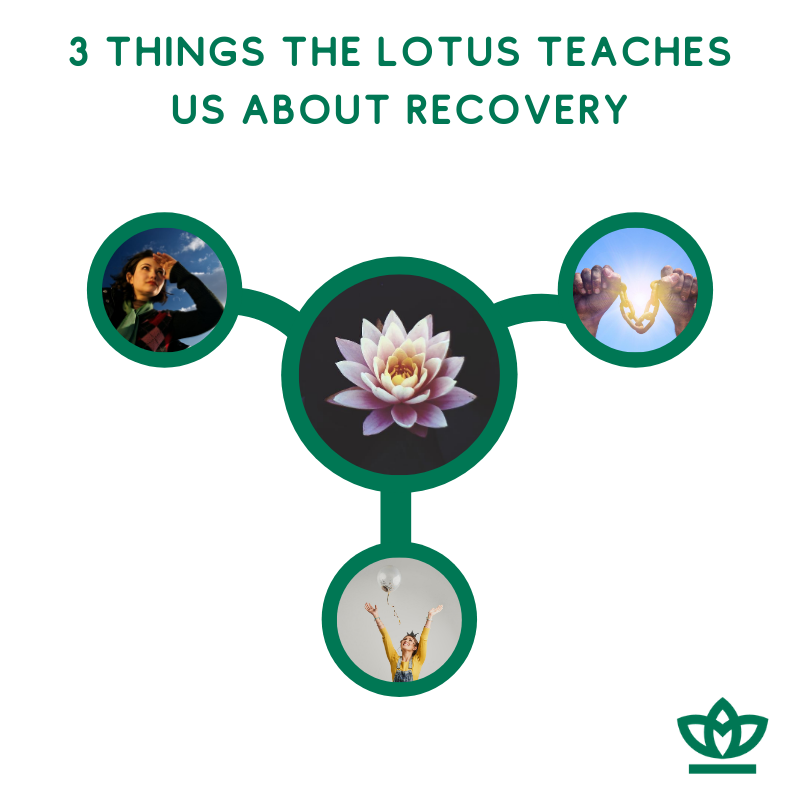3 Things the Lotus Teaches Us about Recovery

The Lotus, India“s national flower, is a plant that grows in murky waters across our country. The plant stands as a symbol of purity and hope for many, and holds within itself a surprising wealth of lessons.
The roots of the Lotus weave through muddy waters and prepare a bright flower that will eventually rest in stark contrast to its surroundings. When the flower begins to open, it often does so one determined petal at a time. In full bloom the Lotus floats just above the water in angelic blossom framed by a muddy backdrop.
The Lotus has Many Lessons to Teach Us
The growth and blooming process of the lotus has struck countless hearts and minds throughout history. In particular, many renowned Buddhist and Hindu leaders, thinkers, and artists have put their thoughts down on paper or onto the canvas.
For example, in Hindu religion and mythology the goddess Saraswathi—the muse of learning— is illustrated seated on a lotus flower. And for Buddhists the flower commonly represents both beauty and de-attachment from this world.
But this blog post isn’t about Buddhism and Hinduism, it’s about recovery. So, in light of recovery, what can we learn from this unique plant? There are at least three things.

1. The Lotus blooms and flourishes amongst impurities
The mud providing nourishment to the roots of the Lotus is representative of our messy human lives. It is through these human experiences, suffering, and even addiction, that we must—like the Lotus—break away from and blossom.
We must believe that the power to break free from addiction can come from within and from around us. In the end, it will be our experiences, inner strength, and spirituality that allow us to continue living in this addiction-laden world, just not as a part of it.
2. The Lotus doesn’t look back
The Buddha was once asked if he was a god. He replied by saying,
“Just like a red, blue, or white lotus — born in the water, grown in the water, rising up above the water — stands unsmeared by the water, in the same way I — born in the world, grown in the world, having overcome the world — live unsmeared by the world. Remember me… as ‘awakened.’ “
As the Lotus grows and matures into a flower it doesn’t look back and despair at its surroundings or past—instead, the plant uses them to its advantage.
Those struggling with addiction should learn from what they’ve been through, and use their experience to their advantage as they recover from their previous lifestyle.
3. The Lotus represents something new
Ancient Egyptians commonly associated the Lotus with the idea of rebirth because of the flower’s tendency to retract into the water at night and emerge again in the sun the next day.
In order for an addict to truly overcome his addiction, he must—like the Lotus—change drastically into someone changed and new. Unlike the Lotus however, recovery will not happen overnight, instead it is a lifetime of change and renewal.
Go Observe a Lotus
If you never have before, or even if you have, take time someday soon to observe a Lotus and look for its symbolic properties of purity, determination, hope, and rebirth.
Sources:
- http://www.lotusflowermeaning.net/
- https://deaddictioncentres.in/find-a-centre/
- http://www.thehindu.com/todays-paper/tp-national/tp-tamilnadu/lotus-the-national-flower-of-india/article3774100.ece
- http://buddhism.about.com/od/eightauspicioussymbols/a/The-Symbol-Of-The-Lotus.htm
- http://www.lotusflowermeaning.net/
















